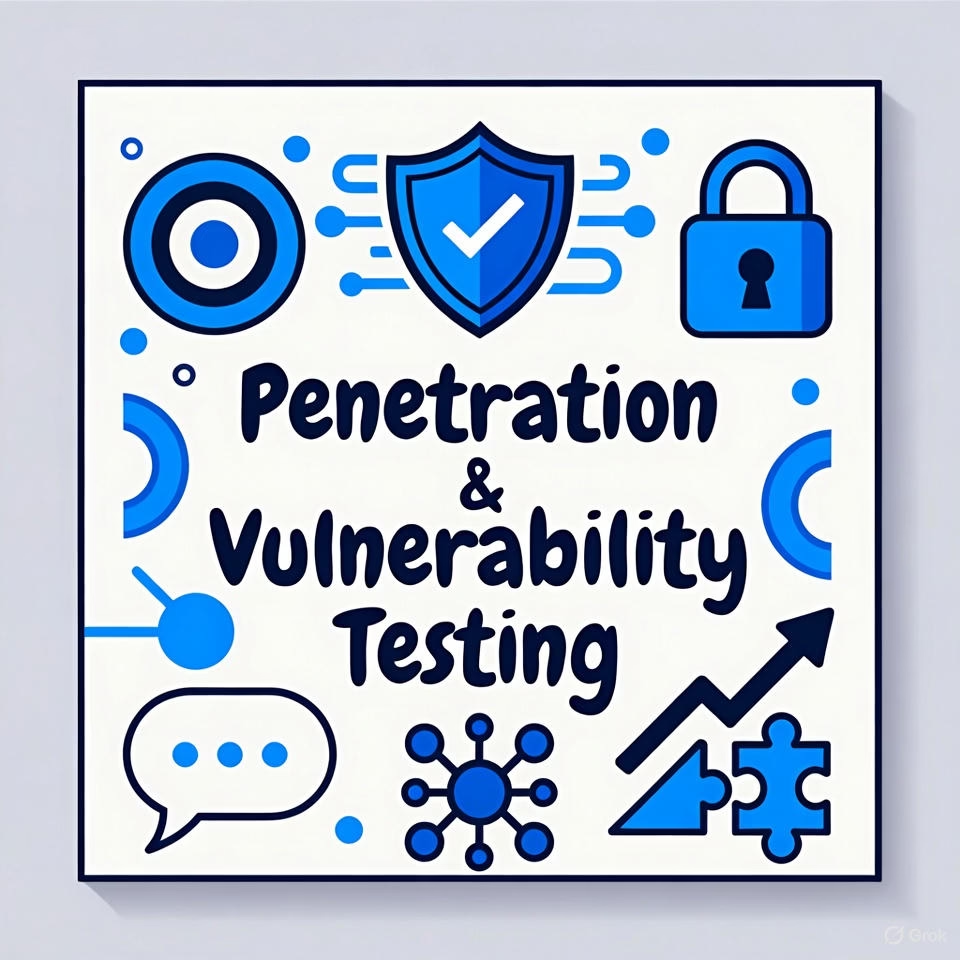In today’s digital world, businesses face a growing number of cyber threats that evolve in complexity every day. From malicious hackers to sophisticated malware, organizations are under constant attack. If your company doesn’t have the proper defenses in place, you could quickly find yourself vulnerable to costly data breaches and system compromises. That’s where Penetration & Vulnerability Testing come into play.
At Opsio Cloud, we understand the urgency of protecting your business against these evolving threats. In this blog, we will explore how Pentest Cloud Services—or Penetration & Vulnerability Testing—can serve as your first line of defense, helping to safeguard your business from cyber attacks before they can cause serious damage.
What is Penetration Testing?
Penetration Testing, or pentesting, involves simulating a real-world cyber attack on your systems, network, or applications. The purpose? To identify vulnerabilities that could be exploited by malicious actors. A penetration test mimics the tactics of hackers to test your defenses and uncover weaknesses that might not be immediately apparent.
Penetration testing isn’t just about scanning for vulnerabilities—it’s about actively attempting to breach your system. This includes everything from exploiting security flaws in your web applications to testing the robustness of your network infrastructure.
At Opsio Cloud, our Pentest Cloud Services are designed to conduct thorough assessments of your systems, identifying critical vulnerabilities that could be exploited in real-world cyberattacks. We simulate attacks across all layers of your infrastructure, giving you a clear picture of where your defenses are strong—and where they are lacking.
What is Vulnerability Testing?
While Penetration Testing focuses on actively exploiting vulnerabilities, Vulnerability Testing takes a more comprehensive approach to scanning for weaknesses in your systems. Using automated tools, vulnerability testing scans your networks, applications, and devices for known security flaws and misconfigurations. It can detect outdated software, missing patches, open ports, and weak passwords—all of which can be potential entry points for attackers.
The difference between Vulnerability Testing and Penetration Testing lies in their methodology. Vulnerability testing is typically automated and focuses on identifying known issues, whereas penetration testing simulates an attack and attempts to exploit any identified weaknesses. Both, however, are vital components of a well-rounded cybersecurity strategy.
Opsio Cloud offers a full suite of Pentest Cloud Services that includes vulnerability assessments designed to detect and address security issues proactively. This gives businesses a dual layer of defense—automated detection of vulnerabilities and active testing to ensure everything is secure.
Why Penetration & Vulnerability Testing Work Together
While both Penetration Testing and Vulnerability Testing offer unique benefits, together, they provide a complete and proactive security strategy. Here’s how they work together:
1. Identifying Vulnerabilities Before Exploiting Them
Vulnerability Testing scans for known weaknesses and potential risks in your system, network, or application. However, not all vulnerabilities are easily exploitable. This is where Penetration Testing steps in. A penetration test doesn’t just find vulnerabilities—it actively tests the risk by attempting to exploit them. Combining the two ensures that your system is not only free of known vulnerabilities but also resilient against real-world attack scenarios.
2. Ensuring Continuous Monitoring and Testing
Pentest Cloud Services at Opsio Cloud provide ongoing testing to ensure that your defenses are always updated. Vulnerabilities can be introduced at any time due to software updates, configuration changes, or new employees accessing your systems. By integrating regular vulnerability scanning with periodic penetration tests, you create a dynamic security model that evolves alongside emerging threats.
How Penetration & Vulnerability Testing Help Protect Your Business
Let’s look at a few real-world examples of how Penetration & Vulnerability Testing have helped businesses avoid costly cyberattacks:
Case Study 1: Preventing a Data Breach
A financial services company was using outdated software and had several unpatched vulnerabilities in its infrastructure. During a Penetration Test conducted by Opsio Cloud, the security team was able to exploit these vulnerabilities and access sensitive financial data. By addressing the vulnerabilities and patching the flaws, the company avoided a potential data breach and significant financial losses.
Case Study 2: Stopping Ransomware in Its Tracks
A healthcare provider fell victim to a ransomware attack because of weak network security and poor password practices. After conducting Vulnerability Testing, Opsio Cloud identified these weaknesses and recommended changes. The vulnerabilities were addressed before they could be exploited, ensuring that the organization’s data was secure and ransomware-free.
How Often Should You Conduct Penetration & Vulnerability Testing?
To stay ahead of cyber threats, regular testing is essential. The frequency of testing will vary based on the complexity of your infrastructure, the industry you’re in, and how quickly your systems change. However, the following guidelines can help you determine how often to conduct Penetration & Vulnerability Testing:
1. Penetration Testing Frequency
We recommend conducting Penetration Testing at least once a year or whenever significant changes are made to your systems or applications. This includes after major updates, system migrations, or changes in your IT infrastructure. If your business handles highly sensitive data or operates in a high-risk industry, you may want to perform penetration tests more frequently.
2. Vulnerability Testing Frequency
Vulnerability Testing should be an ongoing process. We recommend scanning your network and applications regularly—at least monthly or quarterly. Since vulnerabilities can emerge at any time, continuous monitoring is crucial for identifying risks as they arise.
At Opsio Cloud, we offer Pentest Cloud Services that integrate both types of testing to ensure your systems are secure from every angle. We customize our approach based on your business needs, providing continuous vulnerability scanning and periodic penetration tests to keep you protected.
Choosing the Right Pentest Cloud Services Provider
When selecting a provider for Pentest Cloud Services, you should look for a company that offers a comprehensive, customized approach to cybersecurity. Here are a few things to keep in mind:
1. Expertise and Experience
Choose a provider with proven expertise in Penetration Testing and Vulnerability Testing. Look for certifications like CEH (Certified Ethical Hacker) and OSCP (Offensive Security Certified Professional). At Opsio Cloud, our team has years of experience in conducting thorough penetration tests and vulnerability scans.
2. Tailored Solutions
Every business has different needs. A one-size-fits-all approach doesn’t work when it comes to cybersecurity. Look for a provider that offers customized testing based on your business’s infrastructure, industry, and specific security risks. Opsio Cloud works closely with clients to design solutions tailored to their unique security challenges.
3. Reporting and Recommendations
The value of Penetration Testing and Vulnerability Testing lies in the actionable insights you gain. Choose a provider that not only identifies vulnerabilities but also provides clear, practical recommendations for remediation. Our team at Opsio Cloud offers detailed reports and works with you to address security gaps effectively.
Conclusion
Penetration & Vulnerability Testing should be an integral part of any business’s cybersecurity strategy. By proactively identifying and addressing vulnerabilities, these tests help ensure that your systems are secure from cyber threats. At Opsio Cloud, we offer comprehensive Pentest Cloud Services that simulate real-world attacks and scan for weaknesses, giving your business the protection it needs to thrive in a rapidly changing digital world.





